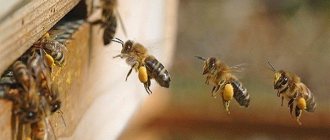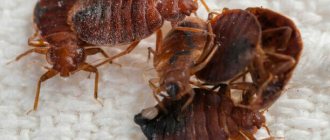How are hives constructed?
The bee hive is a unique structure. Everything in it is created for comfortable living of the swarm. Beehives are primarily made of wood. Anyone who knows how to work with a plane and a hammer is able to build them on his own. But for this you need to thoroughly understand the design of the bee house.
The first step is to find quality material. The longevity of the hives will depend on it.
In production, boards made of high-density trees (oak, birch, etc.) are not used, since the structure should not be too heavy. The hives will have to be moved around the apiary or taken to the place where honey plants bloom.
General requirements for hives:
- simplicity and ease of use;
- reliable protection from temperature changes, rain, and other weather factors;
- good ventilation providing a favorable microclimate;
- the presence of insulation (protects from heat in summer, and from cold in winter);
- the possibility of increasing or decreasing the structure during operation;
- hive parameters corresponding to the size of the swarm, size and number of frames;
- bright, recognizable to bees, coloring of the “house”.
The basis of the hive is a body in the form of a parallelepiped. There is a nesting area inside it. The walls are single or double with insulation.
There are entrances on the front wall - through them the bees enter their home. Usually, two holes are made in the front - at the bottom (a long slit), and above it there is a round hole (it often plays the role of ventilation). The tapholes have valves.
Removable elements are attached to the main module of the hive:
- Bottom. Dead bees and waste fall here. The beekeeper removes them periodically. There is a stand at the bottom. It raises the hive above the surface of the earth. Sometimes the bottom is connected to the body, but then cleaning becomes more difficult.
- Framework. These are rectangular-shaped parts intended for the placement of foundations. The bases are hung in the housing so that the bees fill them with honey and beebread.
- Arrival boards. They are fixed under the entrance slots.
- Roof. Covers the hive from the sun and precipitation, protects from pests. Often under a waterproof roof there is an under-roof - this is a rectangular insert that improves the ventilation of the hive.
- Diaphragm. This is a thin board placed inside the housing. She shares frames with brood in the hive.
- Shop. Part of the body for storing commercial honey. Compared to the nest module, it has less weight, height and wall thickness. During active honey collection, several additional extensions are installed in the hive.
- Dividing grid. It prevents the queen from moving to the other half of the hive.
The dimensions of the structural elements are determined by the top of the hive and the materials used. It is important that all parts are tightly connected to each other, without gaps or cracks. If any are found, they are immediately sealed to prevent the bees from hypothermia.
Man created the first hives 4,000 years ago. In Palestine they were made from unfired clay and straw, in Europe they were hollowed out of wood to make logs. Designs similar to modern ones appeared in the 19th century. The first frame hive was created in 1814 by beekeeper Pyotr Prokopovich.
Construction of bee houses
Keeping honey bees in a frame hive, familiar to modern people, dates back to 1851.
This year, the famous beekeeper Langstroth designed the first frames adapted for hanging inside the hive. This engineering solution made it possible to remove the honeycombs without any problems - there was a small gap of 0.7-0.8 cm between the frames.
The principles of assembling a bee house using the Langstroth method underlie the design of any modern hive. In the same century, other beekeeping scientists invented a honey extractor (1865), artificial foundation (1857) and a method for attaching it.
Interesting fact: According to Russian tradition, the authorship of the first frame hive is attributed to Pyotr Prokopovich. Two more famous beekeepers are also vying for the championship. Among them are Jan Gerzhon and August von Berlepsch. Prokopovich proposed an innovative approach to constructing bee houses in 1814. However, almost 40 years later it was Langstroth who received a patent for a similar invention. Its design has become the most popular and widespread in the world.
Vertical house from Cebro
The two main types of bee hive designs are:
1. Vertical - that is, with the arrangement of nesting combs and half-frames of honey stores (extensions) in several tiers.
The main advantages of this content:
- ease of use - less time is spent servicing the bee colony than when using other designs;
- higher yield of commercial honey;
- easier to control swarming (carried out as the number of tiers increases);
- the brood is not steamed from the stuffiness in the summer.
2.Horizontal design means the sockets expand horizontally. New honeycomb frames are gradually being installed in the house.
- ease of inspection;
- behind a blank partition (diaphragm) you can hold a nucleus or a small layer;
- In case of abundant honey collection, stores for honey are installed on top.
Types of hives and their classification
Hives are usually made of soft wood - spruce, willow, poplar, aspen, linden. They can be collapsible or non-dismountable - bulky and inconvenient to use. Based on their design, hives are also divided into horizontal and vertical.
Horizontal
The design allows you to place up to 14 frames in the hive. If necessary, you can install several additional modules with foundations. The modules are fenced off with bars separating the bee colonies.
Pros:
- convenient to care for bees;
- ease of maintenance;
- no need to lift magazines for inspection.
Minuses:
- very heavy weight;
- difficulty of transportation;
- To store spare honeycombs, you need special cabinets (this is not necessary in vertical hives, since they have a spare body).
Vertical
The design assumes the possibility of increasing the volume of the hive in the vertical plane by installing additional buildings on top of each other. A vertical hive looks like a real hollow. The bees have the impression that they are in their natural environment.
Pros:
- the ability to extract honey without opening the nest;
- ease of maintenance and operation;
- bees tolerate wintering well;
- there is no dampness;
- mold and harmful bacteria do not appear;
- bee colonies reproduce well - beekeepers do not have to make additional efforts;
- the structure of the hive allows the beekeeper to prevent swarming;
- Convenient to transport in a trailer or car body.
Minuses:
- a large food supply is required;
- impressive dimensions and weight - very difficult to carry;
- the presence of flanges complicates maintenance and manufacturing;
- It is impossible to install additional entrances - they cause drafts, as a result of which the microclimate in the hive is disturbed.
When operating vertical hives, you have to turn the bottom several times during the season to change the size of the vest. The procedure is difficult to perform without an assistant.
Where to start searching
You need to start selecting a hive with the following main points:
- Which one will be best for bees, taking into account the specific breeding region. That is, taking into account climatic conditions.
- Which house will be easiest for a novice beekeeper to maintain?
It is necessary to take into account:
- Bees form a vertical nest in nature. They were located in hollow trees - this is where the vertical alignment of their house came from.
- The vertical design of hives, when filled with honey, forms fairly massive buildings. Its weight reaches 60 kg or more. Therefore, one beekeeper will not be able to cope with such a mass. Especially when there is no experience.
Remember! For this reason, they start working with simpler versions of models that will be easy to handle on their own.
How to choose?
The success of beekeeping largely depends on how well the hives are selected. They are selected taking into account needs and goals.
More often, bee houses are purchased. But beekeepers who know how to work with tools and wood are able to make hives with their own hands - if we are talking about a small apiary and simple structures.
In any case, you will need to correctly decide on the type of house for honey plants. There are not many criteria for selection.
Size and number of frames
The productivity of bees depends on the size of the frame. The most popular frames are Dadanov frames (47 x 30 cm). They are suitable for almost any hive - from beds to multi-hull structures. You can buy them at any beekeeping store.
Second place in the popularity ranking is occupied by frames of 47 x 23 cm. They are usually used in multi-body hives. But it is more difficult to find bee kits for such frames. That is why beginners are recommended to choose Dadan frames.
When purchasing a hive, it is important to choose the right number of frames. For Dadanovsky, 12 standard frames are enough, for a lounger - 20 or 24 frames.
According to climate characteristics
When choosing, take into account the climate in the region. If there is a danger of early frosts, insulated structures are needed. Typically, double-walled hives with a thermal insulation layer are used.
In regions with frequent adverse weather conditions, be sure to take into account the size of the house when purchasing. It should be transported without any special difficulties.
In warm regions, hives of any type are used.
By material
Once upon a time, hives were made exclusively from natural materials - twigs, clay, straw, cork. Wooden structures appeared later - in countries with cold climates. Despite the abundance of new materials, wood remains the best.
Wood requirements:
- dry;
- without rot and cracks;
- without knots - they interfere with the free movement of bees;
- thickness - up to 5 mm;
- without chipping or roughness.
The best wood for hives is willow, cedar, spruce. Linden and poplar are also good options. Plywood, fiberboard, reeds, and sandwich panels have proven themselves to be quite good.
By manufacturer
There are quite a few different manufacturers on the market offering decent products. Hives from Zukunft Bienen (Germany) - vertical and horizontal - are in particular demand.
Along with German products, Finnish analogues are popular. They have good insulation and are ideal for regions with cold winters.
Varre
Varre's buildings are four walls knocked together. As a result, the four walls form a box with a height of 21 cm. On two opposite sides there are folds for placing 8 rulers. If it is necessary to maintain an even distance between the rulers, it is recommended to additionally stuff nails with cut heads into the folds and mark slots at the ends.
In most cases, the use of such a hive is recommended for beginner beekeepers. Since there is a significant drawback to this modification - a reduced amount of honey. Many apiaries have such hives, but only as an experiment. The most common option for those who want to master the art of beekeeping is the use of vertical wooden beds.
Did you like the article? Save so you don't lose!
Modern beekeeping is characterized by the use of bee houses of various designs. It's no wonder that newbies are scratching their heads over the question of which hive is best.
Only experienced beekeepers who have already mastered the basic techniques of keeping bees and have decided on their needs, capabilities, and preferences can make the final choice.
Beekeepers' tips for choosing hives
Beginners are advised to choose hives that are simple in design, lightweight and affordable. When planning to make a purchase, pay attention to the following points:
- Focus on the cost of effort and time for servicing and transporting hives.
- Duration of honey collection in the apiary area. If there is little honey, it does not make sense to buy multi-hull hives for stationary use. To transport hives to areas with rich honey production, lightweight multi-hull or cassette structures are needed.
- Breed of bees. It is she who mainly influences the development of the bee family.
It is recommended to buy hives equipped with the same parts and components. This will reduce the cost of maintaining the apiary.
Cassette
Many beekeepers are thinking about how to increase the productivity of the bee colony. It is known that bees need honey plants in sufficient quantities to make honey.
Therefore, beekeepers often move their hives to areas with flowering plants. Not every house can be easily transported, so special designs were created for this task.
In order not to disturb the bees during loading and unloading of the houses, special platforms on wheels were provided. The buildings placed vertically are called cassette hives.
How to make a beehive with your own hands?
Making a hive cannot be called a simple matter, since it is necessary to strictly follow the drawings and be able to work with many tools. Typically, the construction is undertaken by enthusiastic beekeepers with experience in carpentry.
Materials, tools
Homemade structures are usually made from boards - pine, spruce and other soft woods. They are easy to process and hold heat well.
Tools for making hives:
- It is advisable to have a carpentry workbench - it is convenient to process and assemble wooden parts;
- saws;
- plane, jointer and other tools for planing work;
- chisel, chisel and other chiselling tools;
- drill;
- screwdriver;
- drill;
- hammer;
- axe;
- mites;
- mallet;
- pliers;
- measuring tape, level, ruler, etc.
Horizontal houses
Horizontal or single-hull hives (popularly known as bed hives) come in several types:
Ukrainian - standard houses for Ukrainian beekeepers, approved at the state level and accommodating 20 frames.
Houses with standard 24 frames are one of the most common designs.
Houses with rotated frames - that is, having honeycombs rotated 90 degrees to the standard position in the bed. The size of this frame is 300 by 453 millimeters.
Houses with 16 frames , consisting of one body and one or two magazine extensions with 16 half-frames. They are similar in design to risers assembled from two buildings with 24 or 12 nesting frames.
Step-by-step manufacturing instructions
The easiest way is to make a beehive with your own hands. But, in principle, the work involved in creating any bee houses is the same. Before starting work, determine the exact dimensions. Make the drawing yourself or use a ready-made one.
How to make a beehive step by step:
- Cut boards 4 cm wide for the front and back walls of the hive. The boards for the side walls should have a thickness of 3 cm. Dimensions according to your drawing.
- Assemble the structure so that three walls - the back and two sides - are in contact with the bottom. Install the front wall with a slight separation from the bottom (1.5 cm). This gap will serve as a tap hole. Butt the corners into quarters and secure with nails.
- Make the floor from boards 3.5 cm thick and the ceiling 1 cm thick.
- Build the roof at your discretion - flat, pitched or gable.
If the apiary is organized in the northern region, insulate the hive on both sides.
Recommended dimensions of a lounger for 20 frames:
- front wall - 87 x 37 cm;
- back wall – 87 x 34 cm;
- side shields - 44 x 49 cm;
- bottom - 84 x 54.5 mm.
Bee hives are made independently not only from boards, but from plywood and even polystyrene foam. The last material is especially interesting - it is accessible, lightweight, and easy to work with.
Boa
The secret to the popularity of such hives is their compactness and ease of installation and maintenance. Outwardly, it is somewhat reminiscent of the Alpine, but much smaller in size.
Although those who have been involved in beekeeping for many years say that it will be difficult for a novice beekeeper to cope with such a hive. But, as you know, everything is learned by comparison, and for those who are close to such a design, nothing prevents them from starting with just such bee houses.
Making boa constrictor hives with your own hands according to the drawings is not difficult; we will present them to the dear reader for review below. If the information provided is not enough, you can always find additional information on the Internet.
Features of manufacturing hive parts
Despite the variety of designs, the main elements of hives must meet uniform requirements and ensure the fulfillment of certain tasks. Below are the features of manufacturing the main elements of bee hives:
- Frame. This is the main part.
It looks like an ordinary four-walled box. As the family grows and its numbers increase, beekeepers stack the bodies one on top of the other. There are hives with 1, 2, 3 or more bodies. The optimal wall thickness for a hive is 3.5 cm. This option allows insects to safely overwinter. The body parts are fastened together with nails or PVA glue. A 1 x 4 cm slot is always made in front. There are recesses on the sides, at a distance of 7 mm from the top of the case - these will be carrying handles. Holes are drilled at the bottom of the housing with a drill to ensure the flow of fresh air. The outer part of the body is coated with a water-repellent composition and painted in a suitable color - white, yellow, blue. - Roof. It is usually made from boards 2 cm thick. The design is inlaid - in the form of a shield. For greater reliability, the roof is sheathed with metal sheets. Even tin is enough - the main thing is to protect the wood from excessive exposure to moisture and prevent rotting. Beekeepers often place mesh on the top of their hives for additional air exchange during transportation. The mesh also protects the swarm from external adverse factors.
- Bottom. In regions with harsh winters, it is made from two layers of boards at once. And be sure to arrange an insulating backfill. In the south of the country, insulation is not required; the bottom is made single. It is assembled from bars in the shape of the letter “P”. Grooves are made in the side bars and parts of the structure are inserted.
Bee hives are presented in a wide design range, allowing each beekeeper to choose the best option, taking into account the tasks and scale of honey production. With the desire and certain skills, every beekeeping enthusiast can not only make hives on his own, but also modernize them at his own discretion.
0
0
Copy link
Wooden lounger
The horizontal area allows you to accommodate a large number of frames, and the possibility of preparing an additional portion of honey for the winter period gives the beekeeper the opportunity to pay more attention to other features: prevention of the formation of mites and moths. The classic wooden lounger consists of 20 frames and two compartments, which have one common lid and magazine.
The main advantage of this option is the long service life and ease of inspection of the nest. Due to the fact that all manipulations can be performed without touching individual cases, the evidence remains in one place for many years, the wear and tear of both parts and the case over 5-10 years (or even more) is insignificant.
Particular attention should be paid to the bottom of the hive. The bottom of a wooden lounger must consist of at least two bars. The flooring must be at least 40 millimeters thick. Such characteristics help extend the life of the entire hive and avoid the need for reconstruction.
Ways to start an apiary
If a person who decides to start an apiary has experience, he has certain knowledge, skills, it is easy for him to organize and conduct beekeeping, he can get as many families as he needs in a short time.
When the apiary is not staffed, it does not generate income. The beekeeper must understand that everything depends on him; the longer the organization lasts, the less productive it will be and the business will not be profitable.
The answer to the question of where to start is not difficult - with study, you need to learn everything in detail about bees, about caring for them, only then can you purchase hives and bees. After a preliminary study of the theory, it is much easier to work in apiaries, this way you can learn all the mistakes of experienced beekeepers and not repeat them.
If you do everything correctly, after two years, you will have more than 10 hives, then you can complete the apiary.
Basic recommendations for beekeepers
Experienced beekeepers recommend
- buy the necessary equipment in a specialized store;
- monitor the condition of queens and working insects so that the family is strong;
- the ideal time to buy a beehive is spring, when plants, flowers, and gardens bloom;
- buy bees from trusted, reliable beekeepers;
- At first, about three or four hives will be enough to make it easier to care for and ensure the hatching of larvae;
- do not refuse the help of your friends, you can borrow the missing equipment from them;
- the house should be well ventilated;
- prepare for winter in advance;
- there should be no sharp, foreign odors in the apiary;
- clothes must be clean.
By following the suggested tips and recommendations, you can greatly facilitate the process of breeding bees.
Honey collection
The main factor in harvesting is choosing the right time. Pumping should begin 3 weeks after maximum nictar secretion. This period is different for each region. It is best to find out this period from local producers, since independent calculations are quite complex and involve weighing the hives daily throughout the summer.
Frame extraction algorithm
- Wear protective suit.
- Smoke out the bees.
- Open up the hive.
- Smoke out the remaining insects from the hive.
- Open the honeycomb.
- Move the honeycombs to a closed room.
Carefully protect all exposed skin with a protective suit. Even minimal gaps should be absent. If you are allergic to insect bites, do not work with them under any circumstances. Even with sufficient protection, there is a possibility of a sting, since the bees behave very aggressively, sensing a danger to the hive or queen. Then you need to smoke the bees with smoke. To do this, you should bring it to the entrance and first drive the insects away from it. This will prevent them from filling the hive. After which the smoke must be released from above, having first removed the lid.
Once the hive is freed, you can start opening it. Use only special clean tools. Without his help, it will be very difficult to get rid of propolis (the building material of bees). All actions must be as careful as possible. Once the hive is open, you will see many more honey insects. They also need to be expelled. This is done by blowing them out or sweeping them away with a brush. The use of a brush is not recommended, as it may disturb the swarm, which will then attack you. When the hive is completely free, you can begin opening the honeycombs. To do this, take a heated knife and separate the wax. When the honeycombs are free, immediately take them indoors. If this is not done, bees from the nearest territory will fly in and take away the honey, forming a huge swarm. This will make the job much more difficult.
The next step will be to obtain a clean product from the frames you have prepared. To do this, you need to prepare the devices described above and begin the process.
Algorithm for obtaining purified honey
- Installing the frame into the honey extractor.
- Launch of the honey extractor.
- Straining honey through cheesecloth.
- Separation of honeycombs from the frame and grinding them.
- Straining.
- Pouring honey into a special container.
Installing frames into the honey extractor is quite simple. When you do this, simply turn on the machine and wait until the honey drips to the bottom. The resulting honey will contain a large amount of impurities and should be filtered through several layers of gauze. This process is lengthy and takes more than one hour. Then you need to remove the honeycombs from the honey extractor and grind them to a mushy state in a large container. Then strain through cheesecloth. The resulting honey should be distributed into previously prepared containers. Before this, they must be properly sterilized. After a few days, the remaining honeycomb pieces and other debris will float to the surface and can be collected. One frame yields about 1.5 kg of honey, which allows for good profitability when selling it.
Magazine extension
When the colony has developed sufficiently, before the main honey harvest, a store extension is installed on the hive. At the same time, the roof with the roof liner and the ceiling are removed. The “magazine” is installed and the ceiling and liner with the roof are returned to their place.
A taphole was made in the store. In its absence, bees are very reluctant to go to the store. This is how standard stores are made. Store frames are filled with honey, and because... The queen practically does not rise to the store; there is no brood in it.
This option is designed for 16 frames and the same number of half-frames. Thus, the total number of complete frames is 24 pieces. Just like a hive with 24 frames or a hive with 2 bodies of 12 frames each.
Additionally, I would like to note that the number of frames in the case can be different, from 10 to 24 frames. But the principles stated above remain unchanged. It’s not without reason that they say that 50% of success depends on the hive and its quality. And the remaining 50% comes from the beekeeper himself, his care of the bees and, naturally, from the weather and honey collection.











